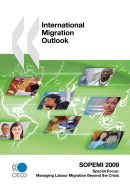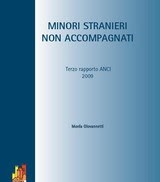
On 3-4 October, the UN
High-level Dialogue on International Migration and Development convenes
in New York, bringing together policy makers and practitioners from
around the world.
"The High-level Dialogue will focus on how
to enhance the benefits of international migration for migrants and
countries alike and on how to strengthen global cooperation in this
area. We have to redefine our approach to migration and mobility in
order to reap all the benefits it can bring to our economies and
societies. Unleashing the full potential of migration for economic
development is one of the great challenges for the 21st century. We have to promote concrete measures which make a meaningful contribution to the lives of migrants and protect their rights", stated Cecilia Malmström.
New UN data show that the number
of international migrants has grown from 175 million in 2000 to 232
million today, with Asia accounting for much of the increase. And the
total is projected to reach 400 million by 2040. Europe
remains the most popular destination region with 72 million
international migrants in 2013. Within Europe, Germany and France hosts
the largest immigrant communities.
The HLD should make an effort to create an action-oriented agenda that contains tangible targets In particular to:
- Ensure that development strategies recognise migration and mobility as 'enabling factors' for development.
- Respect the dignity and uphold the human rights of migrants, regardless of the migrants’ legal status.
- Recognise the opportunities and challenges that increasing urbanisation and migration bring for cities and urban regions.
- Strengthen migration governance through bilateral and regional cooperation, including by engaging with civil society.
- Foster international and regional labour mobility.
Background
- Key figures on international migration
More people than ever are living abroad. In
2013, 232 million people (3.2 per cent of the world’s population) were
international migrants, compared with 175 million in 2000 and 154
million in 1990.
According to the latest figures by the UN1
Europe and Asia host nearly two-thirds of all international migrants
worldwide. Europe remains the most popular destination region with 72
million international migrants in 2013. Within Europe, Germany and
France hosts the largest immigrant communities.
The findings also show that South-South migration is as common as South-North migration. Most
international migrants originate in developing country but in recent
years they have been settling in almost equal number in developed and
developing regions.
This increasing regional and global mobility
creates opportunities; contributing for instance to poverty reduction
and innovation. But it also requires effective governance in order to
address challenges such as ‘brain drain’ (outward migration of educated
people), migrant exploitation and the effects of migration on
urbanisation.
- Measures to ensure respect for and protection of the human rights of all migrants, with particular reference to women and children as well as to prevent and combat the smuggling of migrants and trafficking in persons and to ensure orderly, regular and safe migration;
- Assessing the effects of international migration on sustainable development and identifying relevant priorities in view of the preparation of the post-2015 development framework;
- Strengthening partnerships and cooperation on international migration, mechanisms to effectively integration migration into development policies and promoting coherence at all levels; and
- International and regional labour mobility and its impact on development.
- The EU approach
With its Global Approach to Migration and Mobility the
EU has developed a balanced and comprehensive external migration policy
which includes migration and development as one of its four operational
priority areas. Migration is also a priority under the EU's development cooperation, the Agenda for Change.
Together
with its Member States, the EU is the world's leading donor of
development assistance and will continue to provide substantial support
in the years to come. Between 2004 and 2012, the Commission has
committed almost €1 billion to more than 400 migration-related projects.
On 21 May, the European Commission adopted a Communication "Maximising the Development Impact of Migration",
which provides the basis for a common position of the EU and its Member
States at the High-level Dialogue. It also makes proposals on how to
ensure that future EU action on migration and development becomes truly
comprehensive, addressing the full range of positive and negative
impacts of the various forms that migration can have on sustainable
economic, social and environmental development in low- and middle-income
countries of origin and destination.
MORE
Read about the topics for discussion and the EU approach here. More info about the conference is available at the U.N. website. Earlier this year, the European Commission adopted a Communication  which provides the basis for a common position of the EU at the High-level Dialogue.
which provides the basis for a common position of the EU at the High-level Dialogue.



















Nessun commento:
Posta un commento